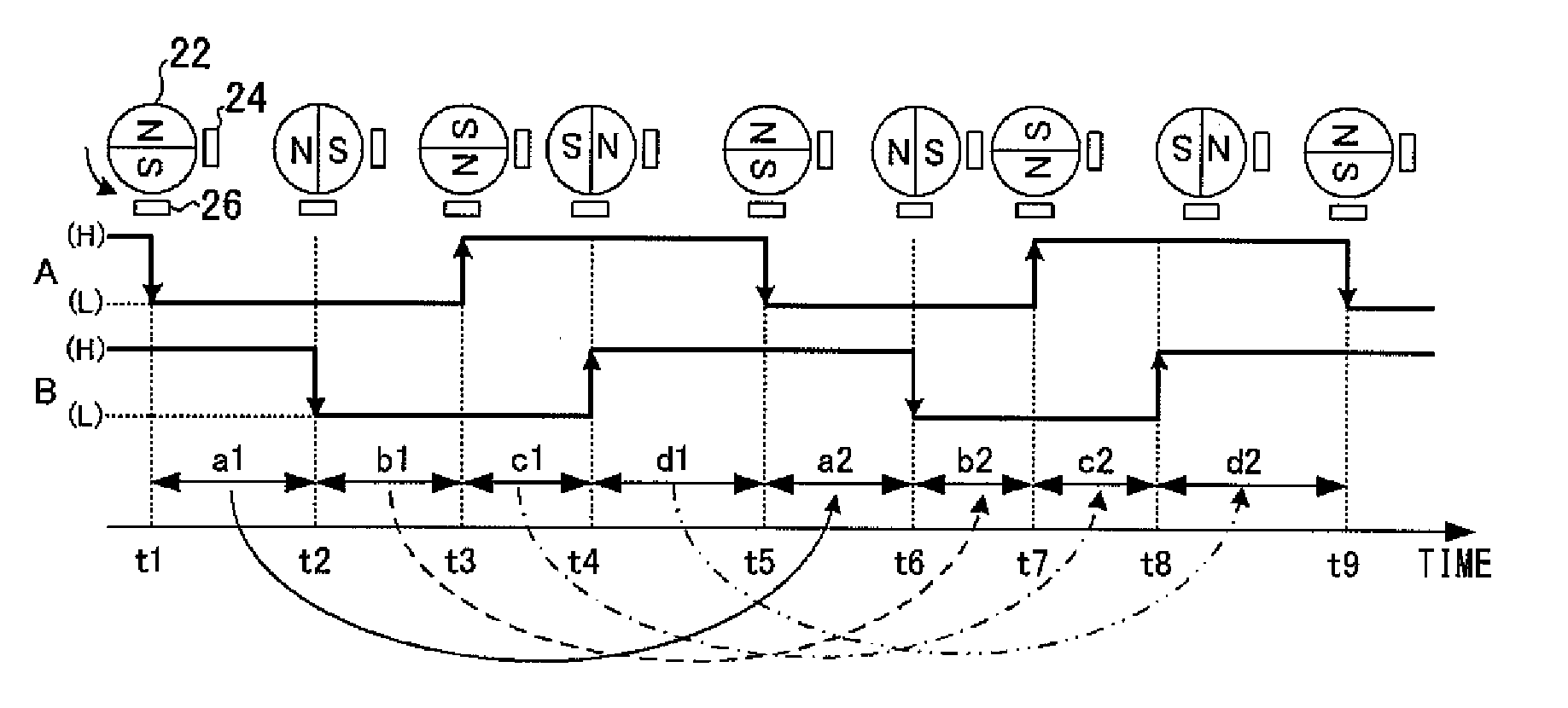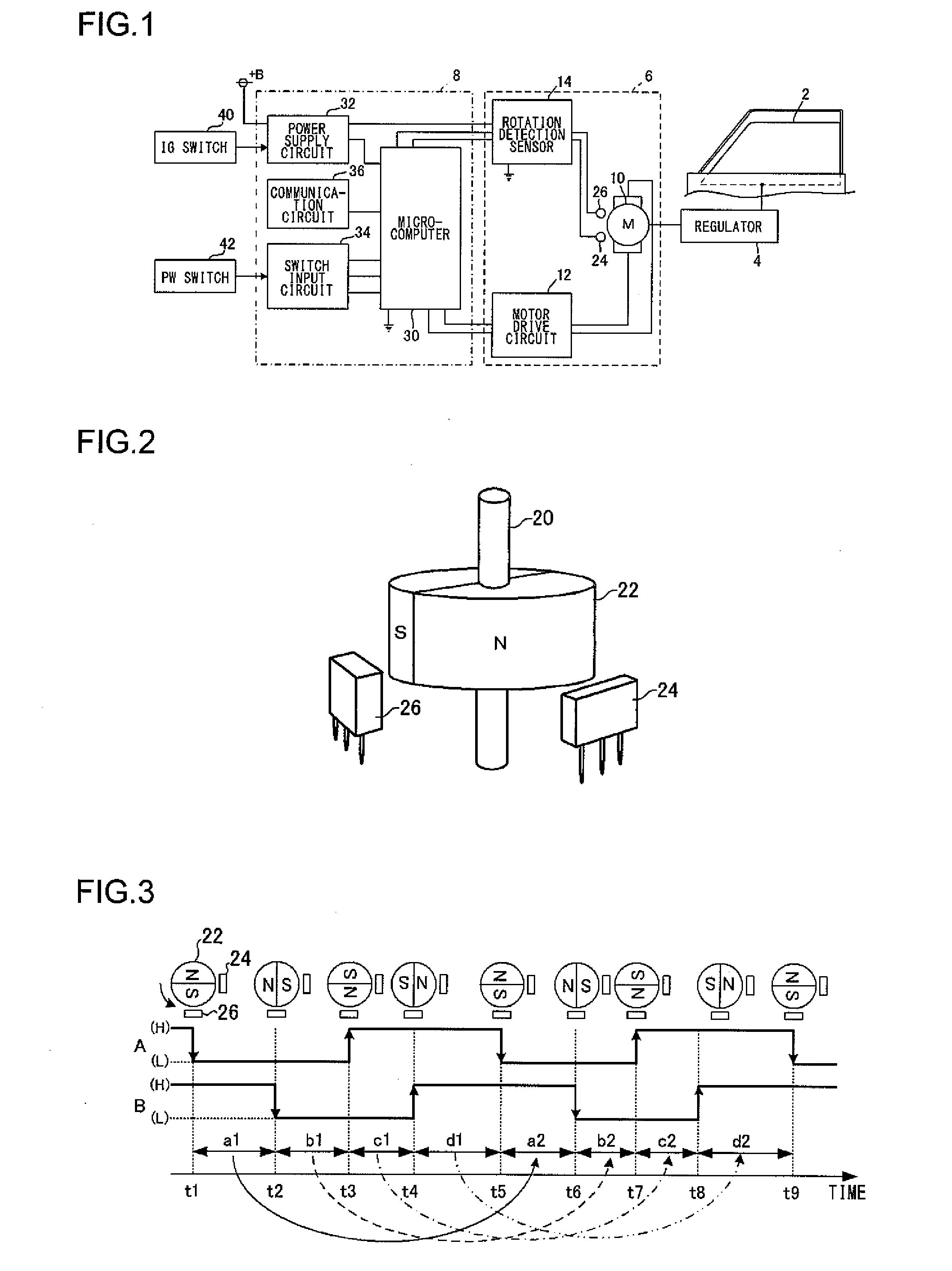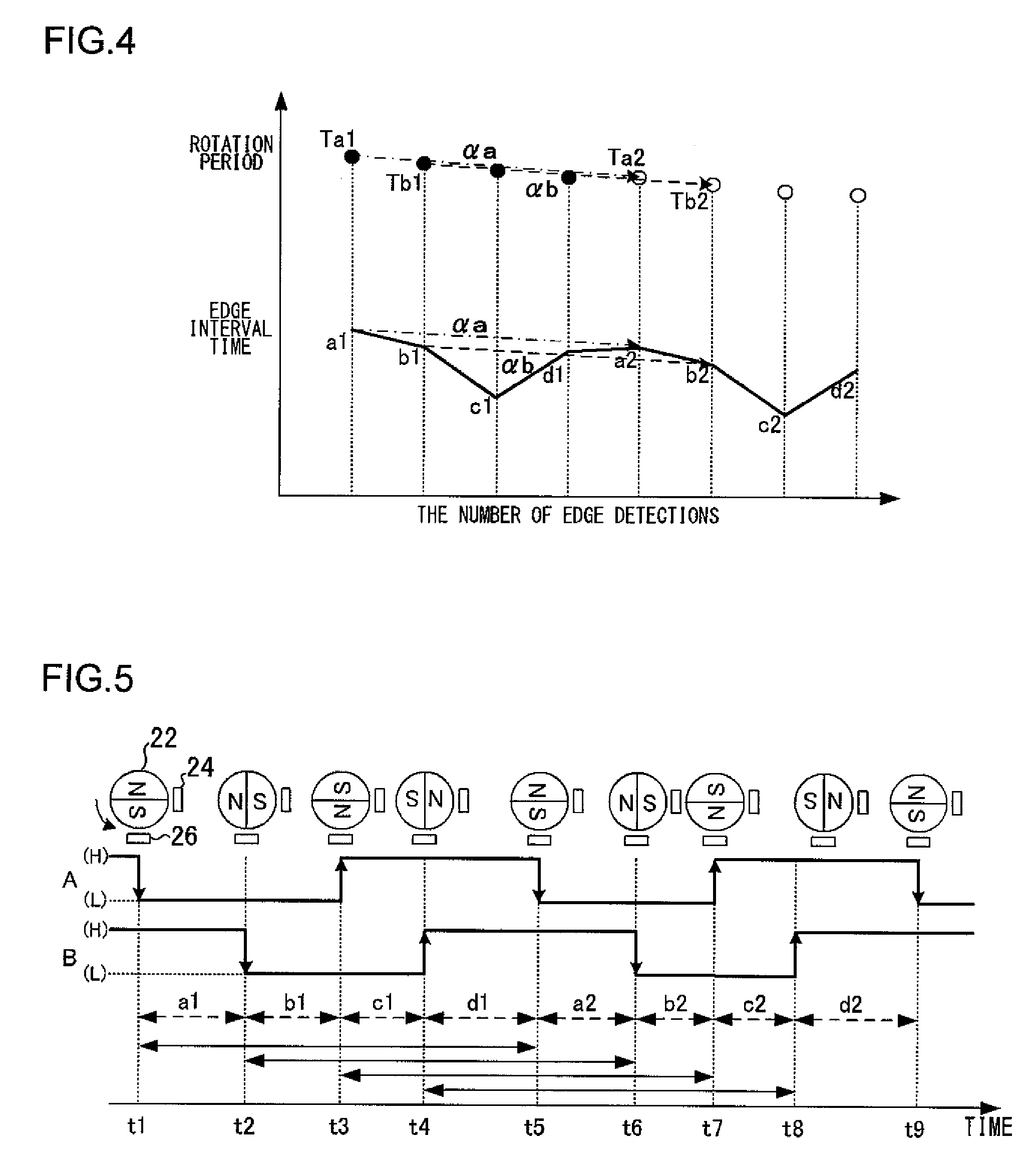Motor characteristics acquiring apparatus, control apparatus using the acquired motor characteristics, and power window control apparatus
a technology of motor characteristics and acquisition apparatus, which is applied in the direction of motor/generator/converter stopper, dynamo-electric converter control, instruments, etc., can solve the problems of low operation speed, difficulty in accurately determining the rotational speed of the motor, and pulse width of the detection signal
- Summary
- Abstract
- Description
- Claims
- Application Information
AI Technical Summary
Benefits of technology
Problems solved by technology
Method used
Image
Examples
first exemplary embodiment
[0041]FIG. 1 shows a schematic constitution of a power window control apparatus according to a first exemplary embodiment of the present invention. FIG. 2 illustrates schematically a structure of a rotation detector for a motor that drives a power window. For convenience of explanation, a power window control apparatus as shown in FIG. 1 is to be understood as one installed in a position operable from the driver's seat.
[0042]As shown in FIG. 1, the power window control apparatus according to the first exemplary embodiment drives and controls a regulator 4 for operating a door glass 2 of a vehicle up and down. The power window control apparatus includes a motor actuator 6 for driving the regulator 4 and a control unit 8 for driving the motor actuator 6.
[0043]The motor actuator 6 includes a motor 10 for driving the regulator 4, a motor drive circuit 12 for driving the motor 10, and a rotation detection sensor 14 for detecting the rotation status of the motor 10. The motor 10, whose ro...
second exemplary embodiment
[0081]A description is now given of a second exemplary embodiment of the present invention. This second exemplary embodiment differs from the first exemplary embodiment in that an average edge interval time is used in the calculation processing of calculating the rotation period of the motor 10, and the other features are basically the same as in the first exemplary embodiment. Thus, the structural components of the second exemplary embodiment similar to those of the first exemplary embodiment are given the identical reference numerals when needed and the description thereof is omitted as appropriate.
[0082]FIG. 11 and FIG. 12 are each a conceptual diagram showing a method for calculating the rotation period according to the second exemplary embodiment. FIG. 11 illustrates a method for calculating the reference period. FIG. 12 illustrates a relationship between the edge interval time detected for each edge detection and the rotation period of the motor 10.
[0083]In the above-described...
PUM
 Login to View More
Login to View More Abstract
Description
Claims
Application Information
 Login to View More
Login to View More - R&D
- Intellectual Property
- Life Sciences
- Materials
- Tech Scout
- Unparalleled Data Quality
- Higher Quality Content
- 60% Fewer Hallucinations
Browse by: Latest US Patents, China's latest patents, Technical Efficacy Thesaurus, Application Domain, Technology Topic, Popular Technical Reports.
© 2025 PatSnap. All rights reserved.Legal|Privacy policy|Modern Slavery Act Transparency Statement|Sitemap|About US| Contact US: help@patsnap.com



